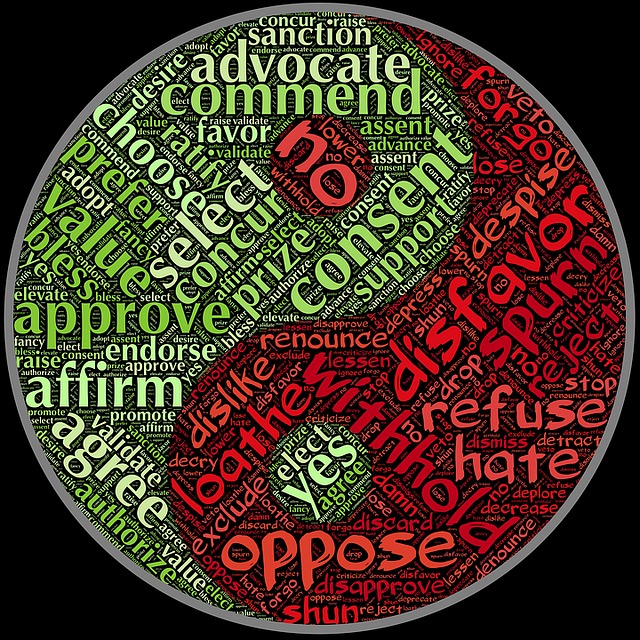Now that we’re in the last few months of an election season that is one of the most highly charged in recent memory, it’s important to review the application of the political campaign activities ban in section 501(c)(3).
The mere 31 words of the 132-word section 501(c)(3) – tacked on almost as an afterthought by floor amendment in the 1954 overhaul of the tax code – may appear clear on its face, but it’s tough to apply.
In Part 1 and Part 2 of this series, we reviewed certain categories of activities that are outside the scope of the politics ban; that is, (1) voter-registration and “get-out-the-vote” drives (conducted in a neutral, nonpartisan manner); and (2) candidate participation in nonpartisan forums or voter-education events. We used examples primarily from IRS Revenue Ruling 2007-41.
In Part 3, we discussed the “dicier situations that can arise by a candidate attendance at events where the person’s candidacy is not mentioned or is irrelevant, or a candidate’s attendance at 501(c)(3)-sponsored events that are open to the public.”
Now, in Part 4, we’ll cover the distinction between “advocacy” and “political campaign intervention.”
Applicable Law
Section 501(c)(3) of the Internal Revenue Code is the definitional section that describes which entities are eligible for this highly favorable category of tax exemption. It is brief; just 132 words. The politics ban is the final phrase, here bolded:
“Corporations, and any community chest, fund, or foundation, organized and operated exclusively for […exempt…] purposes … no part of the net earnings of which inures to the benefit of any private shareholder or individual, no substantial part of the activities of which is carrying on propaganda, or otherwise attempting, to influence legislation (except as otherwise provided in subsection (h)), and which does not participate in, or intervene in (including the publishing or distributing of statements), any political campaign on behalf of (or in opposition to) any candidate for public office. (emph. added)”
These final 31 words of Section 501(c)(3) are a challenge and a headache to understand and apply in the real-world setting of important elections.
Definition of “Advocacy” In the Election-Season Context
Generally, an organization will not qualify for tax exemption under section 501(c)(3) “if a substantial part of its activities is attempting to influence legislation (commonly known as lobbying).” Some “lobbying” is ok; too much is not.
But 501(c)(3)s may “involve themselves in issues of public policy without the activity being considered as lobbying. For example, organizations may conduct educational meetings, prepare and distribute educational materials, or otherwise consider public policy issues in an educational manner without jeopardizing their tax-exempt status.”
Not clear about what this blurb from the IRS website means? You’re not alone. Happily, there are many fine articles on the internet that try to make this difficult concept a bit easier to grasp.
See, for example, excerpts from an article published in the American Bar Association Journal: “Lobbying is just one form of advocacy that an organization may engage in to achieve its particular goals and serve its constituencies. Other forms of advocacy include educating policymakers and the public about broad social issues, encouraging people to register to vote, organizing communities, educating voters about candidate positions, litigating, and many other activities. With the exception of lobbying and partisan political activities, all of the forms of advocacy listed above are unrestricted and unlimited for 501(c)(3) public charities.”
“When many people think about nonprofits and lobbying,” the author continues, “they think of a relationship like oil and water: they don’t mix.” That’s a “widespread” misperception: some “lobbying” is allowed. And it’s important: “Getting involved in the legislative process and having a say in policy discussions is not just an appropriate role for nonprofits; it is vital. If nonprofits are not speaking on behalf of their often-vulnerable communities, chances are nobody else is either.”
See also, here and here.
Rev. Rul. 2007-41 Guidance
The section in Revenue Ruling 2007-41 that deals with “Issue Advocacy vs. Political Campaign Intervention” reiterates that 501(c)(3)s may “take positions on public policy issues, including issues that divide candidates in an election for public office” so long as they “avoid any issue advocacy that functions as political campaign intervention.”
This type of statement, of course, is not much help because it’s conclusory and vague.
The bottom line is that whether a situation is allowable issue advocacy or impermissible political campaign intervention depends on a careful analysis of all of the facts and circumstances.
“Key factors in determining whether a communication results in political campaign intervention include the following:
- Whether the statement identifies one or more candidates for a given public office;
- Whether the statement expresses approval or disapproval for one or more candidates’ positions and/or actions;
- Whether the statement is delivered close in time to the election;
- Whether the statement makes reference to voting or an election;
- Whether the issue addressed in the communication has been raised as an issue distinguishing candidates for a given office;
- Whether the communication is part of an ongoing series of communications by the organization on the same issue that are made independent of the timing of any election; and
- Whether the timing of the communication and identification of the candidate are related to a non-electoral event such as a scheduled vote on specific legislation by an officeholder who also happens to be a candidate for public office.”
Examples from Rev. Rul. 2007-41
The analysis in Revenue Ruling 2007-41 on this point includes three hypothetical examples that are of some help:
- Situation 14. University O, a section 501(c)(3) organization, prepares and finances a full page newspaper advertisement that is published in several large circulation newspapers in State V shortly before an election in which Senator C is a candidate for nomination in a party primary. Senator C represents State V in the United States Senate. The advertisement states that S. 24, a pending bill in the United States Senate, would provide additional opportunities for State V residents to attend college, but Senator C has opposed similar measures in the past. The advertisement ends with the statement “Call or write Senator C to tell him to vote for S. 24.” Educational issues have not been raised as an issue distinguishing Senator C from any opponent. S. 24 is scheduled for a vote in the United States Senate before the election, soon after the date that the advertisement is published in the newspapers. Even though the advertisement appears shortly before the election and identifies Senator C’s position on the issue as contrary to O’s position, University O has not violated the political campaign intervention prohibition because the advertisement does not mention the election or the candidacy of Senator C, education issues have not been raised as distinguishing Senator C from any opponent, and the timing of the advertisement and the identification of Senator C are directly related to the specifically identified legislation University O is supporting and appears immediately before the United States Senate is scheduled to vote on that particular legislation. The candidate identified, Senator C, is an officeholder who is in a position to vote on the legislation. (emph. added)
This situation gets a “thumbs-up” from the IRS, based on its highly specific facts and circumstances.
- Situation 15. Organization R, a section 501(c)(3) organization that educates the public about the need for improved public education, prepares and finances a radio advertisement urging an increase in state funding for public education in State X, which requires a legislative appropriation. Governor E is the governor of State X. The radio advertisement is first broadcast on several radio stations in StateX beginning shortly before an election in which Governor E is a candidate for re-election. The advertisement is not part of an ongoing series of substantially similar advocacy communications by Organization R on the same issue. The advertisement cites numerous statistics indicating that public education in State X is underfunded. While the advertisement does not say anything about Governor E’s position on funding for public education, it ends with “Tell Governor E what you think about our under-funded schools.” In public appearances and campaign literature, Governor E’s opponent has made funding of public education an issue in the campaign by focusing on Governor E’s veto of an income tax increase the previous year to increase funding of public education. At the time the advertisement is broadcast, no legislative vote or other major legislative activity is scheduled in the State X legislature on state funding of public education. Organization R has violated the political campaign prohibition because the advertisement identifies Governor E, appears shortly before an election in which Governor E is a candidate, is not part of an ongoing series of substantially similar advocacy communications by Organization R on the same issue, is not timed to coincide with a non election event such as a legislative vote or other major legislative action on that issue, and takes a position on an issue that the opponent has used to distinguish himself from Governor E.” (emph. added)
This situation gets a “thumbs-down” – based on a careful consideration of all of the facts and circumstances.
- Situation 16. “Candidate A and Candidate B are candidates for the state senate in District W of State X. The issue of State X funding for a new mass transit project in District W is a prominent issue in the campaign. Both candidates have spoken out on the issue. Candidate A supports funding the new mass transit project. Candidate B opposes the project and supports State X funding for highway improvements instead. P is the executive director of C, a section 501(c)(3) organization that promotes community development in District W. At C’s annual fundraising dinner in District W, which takes place in the month before the election in State X, P gives a lengthy speech about community development issues including the transportation issues. P does not mention the name of any candidate or any political party. However, at the conclusion of the speech, P makes the following statement, “For those of you who care about quality of life in District W and the growing traffic congestion, there is a very important choice coming up next month. We need new mass transit. More highway funding will not make a difference. You have the power to relieve the congestion and improve your quality of life in District W. Use that power when you go to the polls and cast your vote in the election for your state senator.” C has violated the political campaign intervention as a result of P’s remarks at C’s official function shortly before the election, in which Preferred to the upcoming election after stating a position on an issue that is a prominent issue in a campaign that distinguishes the candidates.”
Here, too, the IRS gives a thumbs-down.
Conclusion
This question of dividing “issue advocacy” from “political campaign intervention” is murky and difficult for everyone – including IRS officials.
— Linda J. Rosenthal, J.D., Information & Research Director


